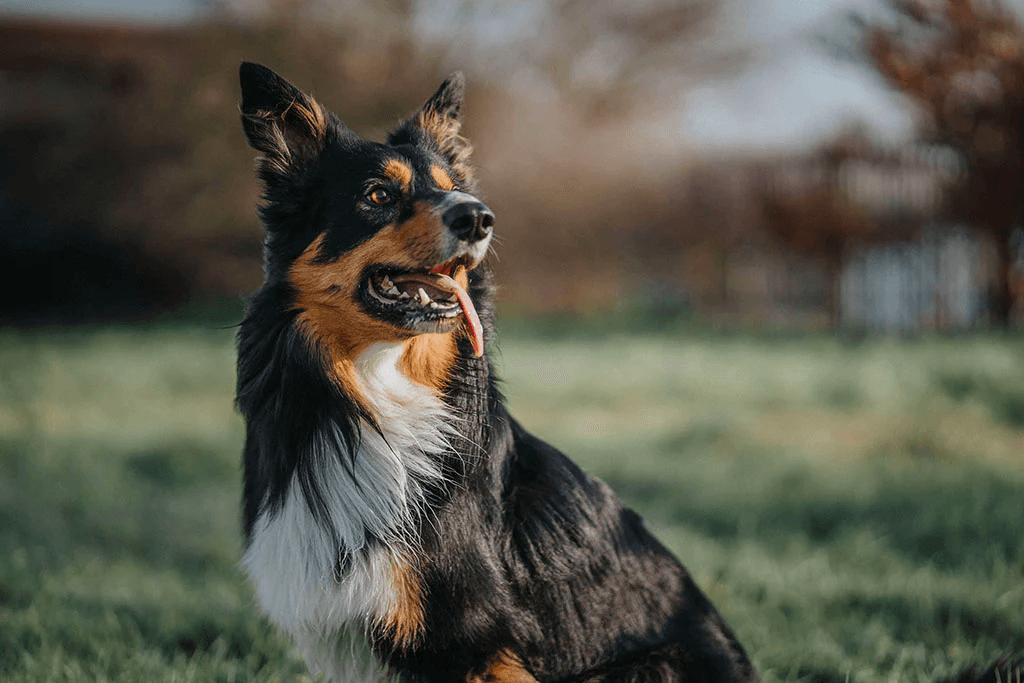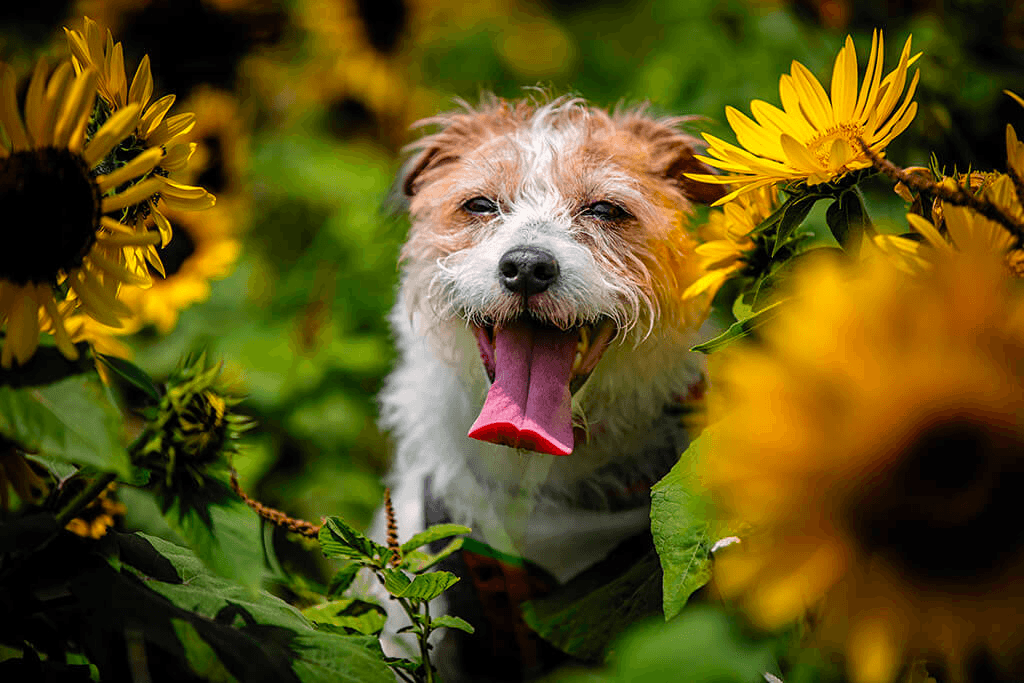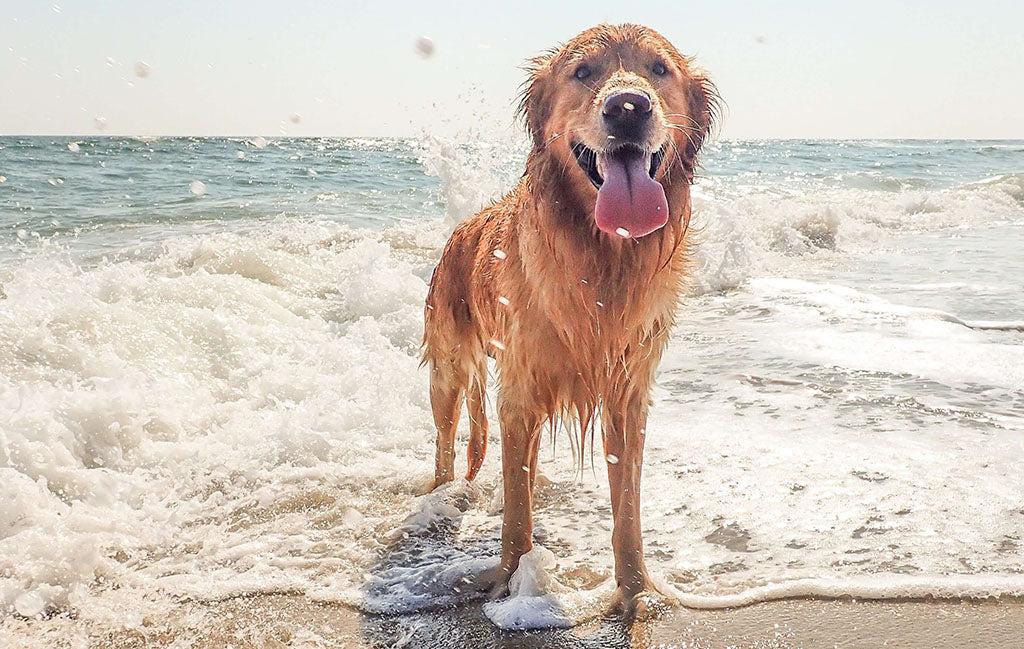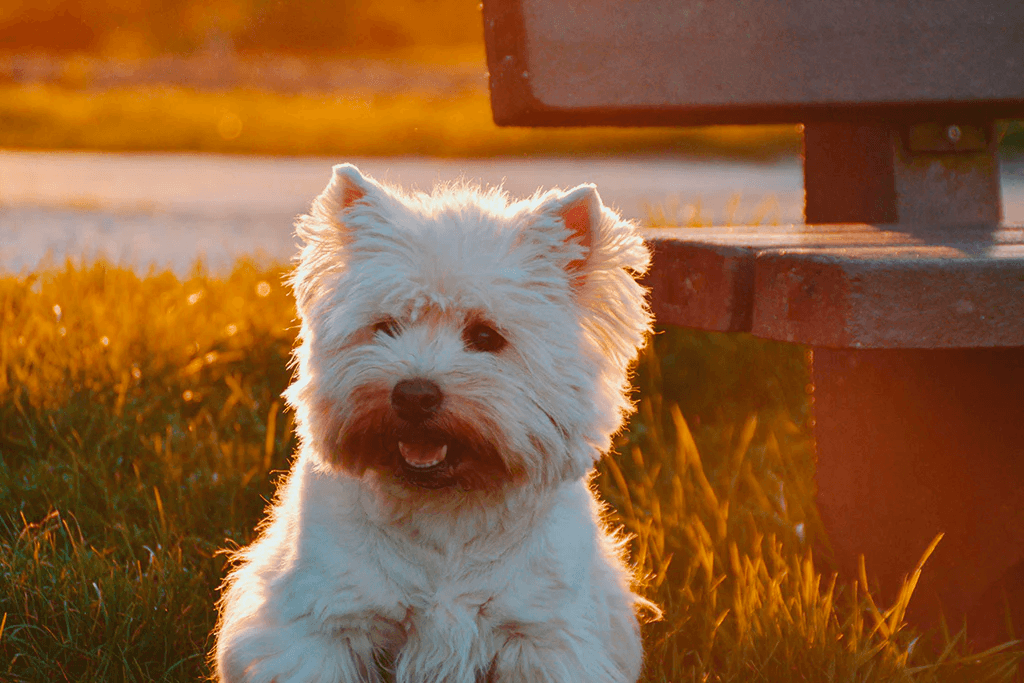Dog dental surgery can feel overwhelming. But dog tooth extraction can improve your canine companion’s quality of life. Learn what to expect, how to prepare, and get a general estimate of costs.
- Home/
- Dog/
- Health & Wellness/
- Dog Tooth Extraction: Costs and What to Expect
Dog Tooth Extraction: Costs and What to Expect

No pet parents want to bring their pup to the vet for a dog tooth extraction. Yet, the removal of diseased or damaged teeth is an important part of maintaining your dog’s comfort and dental health.
Dental disease, also known as periodontal disease, is one of the most common dog health issues. Studies show that 80-90 percent of dogs over the age of 3 have some degree of periodontal disease.
Let’s explore why dogs may need tooth extractions, how a vet performs this procedure, and how much it costs. We’ll also cover tips to help your dog make a full recovery and avoid dental issues in the future.
What is a Dog Tooth Extraction?
A tooth extraction is the surgical removal of a tooth. It is typically performed as part of a dental cleaning and exam under general anesthesia.
Veterinarians may use a dog dental chart during the exam or procedure to note the type and location of teeth that need to be extracted.
If veterinarians are recommending an extraction, it is likely because the damage to the tooth cannot be reversed by cleaning alone and not removing it can cause more pain or lead to an infection.
Why Dogs May Need to Have Their Teeth Pulled
A tooth extraction is needed if a dog’s tooth is damaged, loose, infected (or has the potential to become infected), or causing pain. This can occur for many reasons, but extractions are most commonly associated with periodontal disease and fractured teeth.
Here are some common reasons a dog may need to have teeth pulled:
Periodontal Disease
Periodontal disease is the most common dental problem affecting dogs. It is a serious and progressive condition affecting the gums, bone, and ligaments that support the teeth.
The culprit is bacteria, which creates a sticky film called plaque on the teeth. Within days, this film hardens into hard tartar (also known as calculus), setting the stage for a cascade of problems ranging from gingivitis to advanced periodontal disease. Ultimately, periodontal disease can result in pain, tooth decay, bone and tooth loss, infection, and in some cases, systemic health problems.
Fractured Teeth
Dogs, especially those who chew aggressively, can fracture their teeth on hard objects. Fractures expose the sensitive tooth pulp, causing pain and potential for infection.
Tooth Root Abscess
This severe infection occurs when a pocket of pus forms around the root of a tooth, and is usually the result of bacteria entering a broken or diseased tooth. Abscessed teeth are very painful. Depending on which tooth is affected (commonly the upper fourth premolar and first molar), a dog may develop swelling under the eye from this condition.
Other Reasons
Additional reasons for teeth extractions in dogs include
- Malocclusion (misalignment of a dog’s teeth)
- Retained deciduous teeth (when a puppy tooth fails to fall out after the permanent tooth has grown in)
- Unerupted teeth
- Teeth next to an oral tumor
In some cases, as an alternative to dog tooth extraction, a veterinary dentist may be able to perform a root canal and save the tooth.
Canine Tooth Extraction: Preparation, Procedure & What to Expect
The technique and complexity of tooth extraction can vary significantly. Adult dogs have 42 teeth, composed of incisors, canines, premolars, and molars. Some teeth have only one root while others have two or three. The affected tooth, type, and severity of dental disease all affect the tooth extraction.
Preparing for a Dog Tooth Extraction
Before your dog’s dental procedure, there are a few things you can do to help your dog and your vet prepare.
Physical exam and evaluation. Your vet will first get a complete medical history from you, perform a nose-to-tail physical exam, and discuss their findings and recommendations. Bloodwork will be run to evaluate major organ function and overall systemic health. This is often done at an initial appointment, at which you can also schedule the dental procedure.
It’s important to understand that until your vet is able to fully examine your dog’s mouth and review their dental X-rays, it can be difficult to know the extent of dental disease and whether (or how many) teeth will need to be extracted. Your vet will call you during the procedure to discuss these things, so it’s important to be available by phone on the day of your dog’s dental surgery.
Withholding food and water. Your dog will be under general anesthesia during the procedure. This prevents pain and movement during the extraction. You will likely need to withhold food and water from your dog before the procedure — usually 6-12 hours prior to your dog’s appointment. Your vet will provide the right timeline for your dog.
Drop off and pick-up instructions. You will generally be instructed to drop your dog off early in the morning of the procedure and pick them up that evening. You will be given detailed instructions for how to care for them at home.
The Extraction Process
The extraction process can vary from vet to vet. It may also change based on the affected tooth and severity of disease. Generally, a dog tooth extraction involves these steps:
Step 1: Anesthesia: Anesthetic drugs are used to keep your dog comfortable and still during their dental procedure. This usually involves an injection of premedication, IV induction, and placement of an endotracheal tube to deliver oxygen and gas anesthesia. Throughout the procedure your dog’s vital signs, such as heart rate, respiration, and blood pressure, will be continuously monitored.
Step 2: Dental cleaning, exam, and X-rays: Your dog’s teeth will be scaled, examined, and polished. The vet will take X-rays to help them evaluate your dog’s dental health and determine if any teeth need to be extracted.
Step 3: Administering nerve blocks: Before beginning dental extractions many vets will inject a local anesthetic, similar to Novocain, to help numb the area for better pain control.
Step 4: Flap creation: The veterinarian begins by making an incision in the dog’s gum tissue to create a flap. This flap is carefully lifted to expose the tooth and the surrounding bone. The creation of a flap allows the veterinarian to gain better access to the tooth.
Step 5: Bone removal: A drill and bur is then used to remove a small amount of bone around the tooth root, to facilitate extraction.
Step 6: Tooth sectioning: Teeth that have multiple roots are especially difficult to remove and are usually cut into smaller pieces (with a dental drill) that can then be individually removed.
Step 7: Elevation and extraction: Instruments called dental elevators and forceps are used to carefully loosen, lift, and remove the tooth from its socket. This can be a slow and delicate process. It’s important to make sure that all parts of the tooth are removed. Your vet can take more X-rays to make sure that no root fragments are left behind. The empty socket is then cleaned and smoothed out.
Step 8: Suturing: The gingival flap is closed over the extraction site with dissolvable sutures.
Step 9: Recovery: Following the dog tooth extraction, your dog will be woken up from anesthesia and monitored closely for the remainder of the day.
Dog Tooth Extraction Cost
The cost of tooth extraction and dental procedures for dogs average $500 to over $3000, and can vary widely based on many factors, including:
- The length and complexity of the procedure: Dental procedures can range in length, depending on the extent of the dental disease and the number of extractions needed. Longer and more complex procedures will come with a higher cost.
- Which tooth or teeth require extraction: Incisor teeth are generally the easiest to extract, as they are small with a single root. Canine teeth and three-rooted teeth are generally the most complicated to extract.
- The number of extractions needed: If your dog needs multiple extractions it will increase the cost of the dog dental procedure.
- The reason for extraction: The severity of dental disease or the reason for extraction can affect length of time and difficulty of the procedure. Fractured teeth tend to be more difficult to extract because their roots are generally surrounded by solid, healthy bone. Dogs with more advanced periodontal disease may already have loose teeth, which come out easier.
- Your location: The cost of veterinary care in general varies significantly across the country.
- Your dog’s health: Seniors and dogs with other medical conditions may be at higher risk for going under anesthesia or require additional testing and monitoring.
- The quality of the vet clinic: Dental X-rays are considered standard of care. However, some vet clinics do not have them. If corners are cut to try to save money, it can put your pet at higher risk for complications.
- Who performs the extraction: A board-certified veterinary dentist will charge more than a general practitioner, due to their extensive training and experience.
- Anesthesia and medication cost: There will be some variation in cost depending on the medication protocol that your vet uses. This cost of anesthesia will also be more for larger dogs.
Taking these factors into consideration, it is difficult to come up with an exact cost for dog dental extractions. Your vet can provide you with a rough estimate before the procedure and call to update you with a more specific cost during it. Here is a potential cost breakdown:
| Service/Procedure | Estimated Cost Range | Notes |
| Simple Extraction | $10-$35 per tooth | Single-rooted teeth, minimal surgical intervention |
| Complex Extraction | $75-$300 per tooth | Multi-rooted teeth or those requiring more extensive surgical intervention |
| Preoperative Blood Work | $50-$200 | Routine blood tests to assess overall health and suitability for anesthesia |
| Dental X-rays | $100-$300 | To evaluate tooth roots and surrounding bone structure |
| Anesthesia | $100-$300 | Varies with the length of the procedure and the size of the dog |
| Pain Medication & Antibiotics | $25-$100 | Prescribed to manage post-operative pain and prevent infection |
| Nerve Block | $25-$50 per site | Local anesthetic injection for pain management during and after the procedure |
| Dental Cleaning | $200-$300 | Often performed before or after extraction to address overall oral health |
Unfortunately, there are no low-cost options for dog tooth extractions. Some vet clinics may offer these services without all the bells and whistles, such as pre-anesthetic bloodwork, dental radiographs, and IV fluids during the procedure. However, taking this route can put your dog at risk for complications.
If you have pet insurance, be sure to check and see if your plan covers dental work. This can be a great way to help manage costly dental extractions in dogs.
Dog Tooth Extraction Recovery and Aftercare: Timeline & Tips

Recovery from a dog tooth extraction is generally smooth, with most dogs bouncing back to their normal selves within a week or two. That said, it’s important to follow your veterinarian’s recommendations for at-home care, including medications, exercise restriction, and what to feed a dog after tooth extractions.
Here’s what to expect from your dog’s recovery:
Immediately after the procedure: Your furry friend will be groggy from the anesthesia and might drool or bleed slightly for about 24 hours. Be sure to keep them confined, and away from stairs or anything that they could hurt themselves on, until they are steadier on their feet.
During the first 24-48 hours: Offer small amounts of soft food to avoid gastrointestinal upset, and give medications as prescribed by your vet.
During the first week: Continue to feed soft food (canned or moistened kibble) to avoid damage to the extraction sites. Keep your dog calm and quiet (gentle leash walks only). Watch for signs of pain, swelling, excessive bleeding, or infection (like foul odor or discharge). If your dog is pawing at their mouth they may need to wear an E-collar to prevent them from damaging the extraction sites.
Within 14 days: The stitches should begin to dissolve, and most dogs are back to their regular eating habits and energy levels. This is a great time to begin an at-home dental care routine, including daily tooth brushing.
A follow-up appointment with your vet around two weeks post-extraction is recommended to check on the healing progress.
If any concerns arise, contact your veterinarian immediately. You can soothe your dog by applying cold compresses to the outside of their cheek, offering a warm and soft bed, handling them gently around the extraction site, and following your vet’s instructions diligently.
Can a Dog Survive Without Teeth?
If a dog needs to have many (or all) of their teeth removed, it’s only natural for pet parents to wonder, “Can a dog survive without teeth?” The good news is yes! Even if many teeth need to be extracted, dogs tend to adjust very well, and most can continue to eat their regular diet (even kibble) after the extraction sites have healed.
Possible Complications & Side Effects of Dog Dental Surgery
Common side effects after dental extractions include minor pain, swelling, and bleeding over the first couple days, and gastrointestinal upset related to anesthesia or other medications.
While oral surgery is very common, it is important for pet parents to be aware of potential dog tooth extraction complications, which may include:
- Infection: Watch for signs of infection including swelling, redness, discharge, bad breath, loss of appetite, lethargy, and fever. With the exception of tooth root abscesses, most dogs do not need antibiotics after extractions.
- Excessive bleeding: While blood-tinged saliva is normal in the post-op period, prolonged or heavy bleeding following a dog tooth extraction should be evaluated by a veterinarian.
- Nerve or tissue damage: In rare instances, tissue or nerve damage can occur, affecting the mouth, face, or eyes. This is usually temporary but can sometimes cause long-term issues.
- Jaw fracture: This is a rare complication that can occur in small dogs with weakened jawbones due to underlying conditions such as cancer or severe periodontal disease.
- Retained root fragments: Occasionally, small fragments of tooth root may break off and be left behind after surgery and can cause pain or infection in the future. Your vet should take X-rays after extractions have been completed to ensure that all teeth have been successfully removed.
- Dehiscence: In some cases the sutures fail and the gingival flap may open. Your vet may recommend another procedure to repair and resuture the area. The risk of dehiscence can be decreased by keeping your dog calm, using an E-collar, and feeding them a soft diet.
- Anesthesia complications: Although rare, any surgical procedure involving anesthesia carries a risk of complications, such as respiratory issues or allergic reaction.
Risk of complications can vary based on your dog’s breed, age, overall health, and the extent of their dental disease. Most dogs do very well after tooth extractions, and their owners often notice renewed playfulness and energy once the mouth pain has been alleviated.
Preventing Tooth Extractions in Dogs
In many cases, canine periodontal disease is largely preventable. The best way to prevent dental disease in your dog is through routine dental cleanings under anesthesia by a veterinarian and a consistent at-home dental care routine, including:
- Daily tooth brushing and dental care routines
- Prescription dental diets if recommended by your veterinarian
- Not letting your dog chew on hard or abrasive objects, such as bones and antlers
While the idea of your furry family member undergoing a tooth extraction might seem daunting, it is a very safe and common procedure that can greatly improve your dog’s quality of life.
By addressing dental issues early and maintaining a consistent at-home care routine, you can help prevent the need for additional extractions in the future.
If you have any concerns about your dog’s dental health, it’s best to contact your veterinarian. They can guide you through the best course of action for your dog’s individual needs to ensure they enjoy a long, pain-free life with a bright, healthy smile.
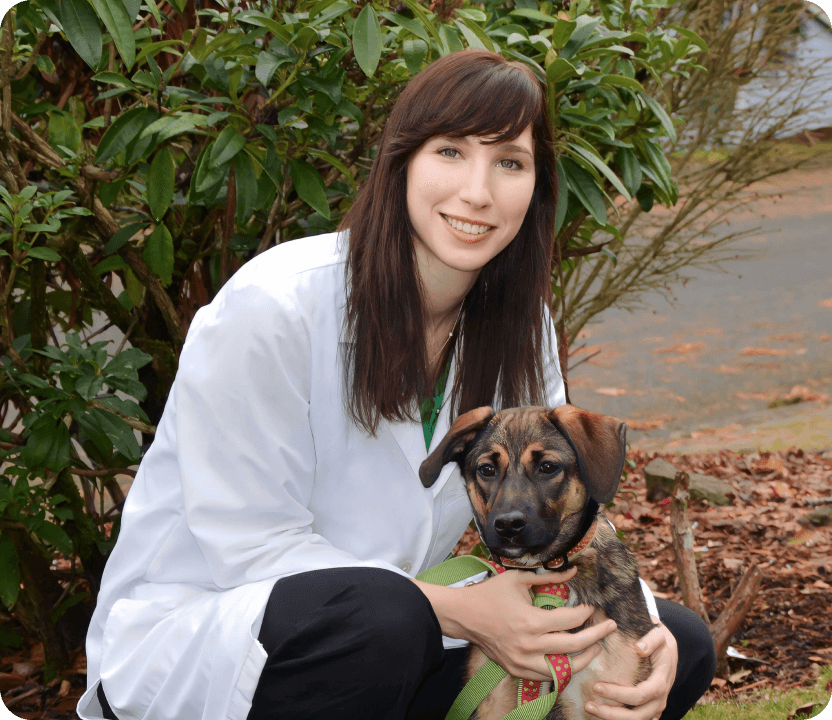 L
L